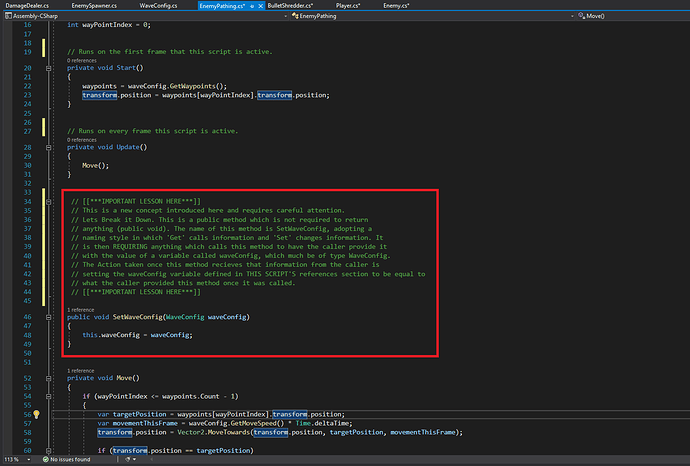I want to be absolutely sure I understand this part of the course, as it was the first time I got genuinely stuck. Even though I followed along with Rick and everything works correctly, I want to make sure I actually understand why before I continue. I tried to summarize how I personally understand it as a comment above the highlighted method.
If Rick or anyone for that matter can tell me ‘Hey! You got it!’ I would be super relieved, but I just want to be sure before I move on. If what I have here is incorrect, I would appreciate someone explaining where I am mistaken.
Thanks a lot!
-Andrew


